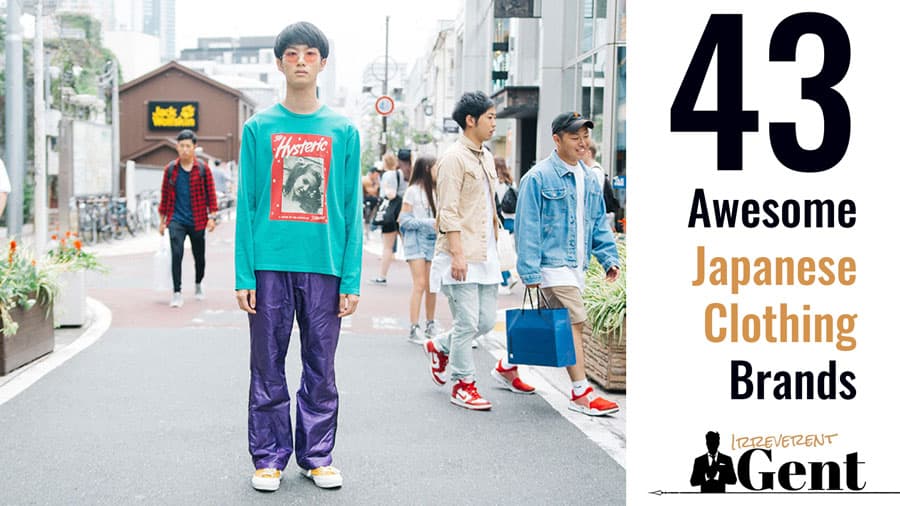Branded Clothing for Active Lifestyles: What Fabrics Support Performance?
Branded Clothing for Active Lifestyles: What Fabrics Support Performance?
Blog Article
The Relevance of Lasting Clothing: Exactly How It Affects the Environment and Your Wardrobe
Lasting garments is significantly identified for its important duty in reducing the environmental influence of the rapid style sector. By focusing on environment-friendly products and ethical production approaches, it deals with pushing eco-friendly issues. This change not just profits the earth but also affects consumer options, bring about a more thoughtful strategy to closet administration. Recognizing these dynamics raises vital questions about style's future and personal obligation in shaping it.
The Ecological Footprint of Fast Style

Benefits of Lasting Materials
Lasting materials supply substantial benefits, particularly with environment-friendly textile selections that reduce environmental damage. These materials also show resilience and long life, reducing the need for frequent replacements. As an outcome, they add to a more sustainable style sector and advertise responsible customer actions.
Eco-Friendly Textile Options
While the fashion sector has actually long been related to fast patterns and environmental damage, the surge of eco-friendly material options presents a transformative opportunity. Lasting materials such as organic cotton, hemp, and Tencel have obtained appeal because of their reduced eco-friendly influence. These materials are usually created without harmful pesticides and need less water, decreasing their carbon footprint - Branded Clothing. Furthermore, numerous environmentally friendly materials are eco-friendly, adding to a round economic climate by decreasing waste. Selecting lasting products not just supports ecologically responsible methods however likewise promotes healthier ecosystems. As consumers end up being a lot more familiar with their purchasing power, the demand for green fabrics motivates brand names to introduce and take on even more lasting production techniques, inevitably benefiting the world and future generations
Durability and Durability Benefits
Several customers are significantly acknowledging the toughness and durability benefits of sustainable products in their clothes choices. Unlike conventional materials, lasting materials such as organic cotton, hemp, and recycled polyester are crafted to endure wear and tear, causing garments that last longer. This minimized regularity of substitute not just conserves customers cash gradually but additionally diminishes waste generated by quick fashion. Furthermore, lasting garments usually uses eco-friendly manufacturing approaches that enhance textile strength, adding to a reduction in the total carbon impact. By spending in durable garments, customers can grow a much more sustainable wardrobe while appreciating top notch items that maintain their aesthetic and capability with time. Consequently, toughness and durability stand as key benefits of choosing lasting products.
Decreasing Waste Via Sustainable Practices
Decreasing waste in the fashion sector can be attained via innovative practices such as upcycling and repurposing products. In addition, taking on minimal closet strategies urges customers to prioritize top quality over quantity, eventually reducing clothes consumption. Together, these strategies contribute considerably to a much more sustainable garments design.
Upcycling and Repurposing Products
Upcycling and repurposing materials have actually emerged as ingenious techniques in the fashion business, changing thrown out textiles right into useful brand-new items. This strategy not just minimizes waste however likewise urges creative thinking and originality in garments design. By taking old garments and materials, developers can create one-of-a-kind items that reflect personal design while lowering the demand for brand-new sources. Additionally, upcycling commonly needs less power and water compared to traditional manufacturing processes, substantially decreasing the ecological impact of style. As consumers become much more knowledgeable about sustainability, the popularity of upcycled clothes remains to rise, advertising a round economic climate. Ultimately, these methods contribute to an extra sustainable future, where style focuses on environmental wellness over fast production and consumption.

Minimal Closet Techniques
As people progressively look for to lessen their ecological impact, embracing minimalist wardrobe strategies has actually gotten grip as an effective strategy to lasting fashion. These approaches highlight top quality over quantity, encouraging consumers to curate a smaller sized collection of flexible, resilient clothing. By concentrating on timeless pieces that can be blended and matched, people can reduce the regularity of acquisitions and ultimately lower waste.Additionally, minimalism promotes mindful usage, advising shoppers to assess the environmental and ethical implications of their options. This strategy not just cultivates an extra sustainable lifestyle yet also simplifies day-to-day decision-making regarding attire. As people welcome minimalist principles, they add to a fashion society that values sustainability and accountable consumerism, eventually resulting in a much more eco-conscious society.
The Duty of Moral Labor in Sustainable Style
While lots of customers are progressively knowledgeable about the environmental consequences of their garments choices, the relevance of honest labor techniques in sustainable style can not be ignored. Moral labor encompasses reasonable salaries, risk-free working problems, and respect for employees' civil liberties, developing the backbone of accountable fashion manufacturing. Brands that focus on moral labor not just uplift communities however likewise set a criterion for accountability in the industry.Moreover, the integration of honest techniques promotes transparency, allowing customers to make informed selections concerning their acquisitions. This method contrasts greatly with fast style's exploitative labor versions, which typically prioritize revenue over individuals. By supporting firms devoted to moral labor, customers add to a system that values human dignity together with environmental sustainability. Consequently, ethical labor is not just an add-on; it is important to the more comprehensive mission of sustainable style, making certain that the quest for eco-friendliness does not come with the cost of civils rights.
The Impact of Lasting Apparel on Carbon Emissions
Lasting clothing has the potential to considerably lower carbon exhausts related to the garment industry. Conventional garment production adds notably to greenhouse gas emissions, primarily due to energy-intensive production procedures and using non-renewable sources. On the other hand, lasting fashion concentrates on environment-friendly products, such as natural cotton or recycled fibers, which often need much less energy to produce.Moreover, lasting brand names have a tendency to adopt extra efficient manufacturing techniques, minimizing waste and useful reference decreasing general exhausts. By prioritizing resilience and timeless layout, sustainable apparel encourages consumers to acquire less frequently, additional lowering the carbon impact connected with overconsumption.Additionally, many sustainable brand names are devoted to transparency in their supply chains, allowing consumers to make informed selections that align with their worths. Ultimately, shifting in the direction of lasting garments can bring about a significant reduction in carbon exhausts, adding to a healthier planet and a much more sustainable future for the fashion business.
Supporting Regional Economic Situations With Sustainable Selections
The shift towards sustainable clothing not just addresses ecological issues yet also considerably advantages neighborhood economies. By picking lasting style, consumers often support neighborhood craftsmens and local business, enhancing area durability. These ventures commonly operate on a smaller range, prioritizing craftsmanship and moral techniques over mass production.Investing in locally made sustainable clothes promotes task development and promotes financial development within areas. As customers come to be much more mindful of the environmental influence of their acquisitions, they increasingly look for out items that mirror their worths. This need motivates local suppliers to adopt sustainable techniques, adding to a circular economy.Moreover, sustaining neighborhood organizations lowers transportation discharges, lining up with eco-conscious customer behavior. The interconnectedness of lasting clothes and neighborhood economies highlights the crucial role that individual selections play in advertising both environmental and financial health and wellness. By promoting more helpful hints these neighborhood connections, communities can prosper while also functioning towards an extra lasting future.
Transforming Your Storage Room: Tips for a Lasting Wardrobe
As individuals seek to decrease their ecological effect, transforming a closet into a sustainable closet ends up being a vital step. One reliable strategy is to examine existing clothing, maintaining only products that are used routinely and that align with sustainability objectives. Focusing on quality over amount is vital; buying durable pieces from green brands can significantly decrease waste.Additionally, incorporating pre-owned items can revive a wardrobe while lessening ecological damages. Organizing apparel swaps with buddies or donating unused products can additionally promote sustainability.When purchasing, people should look for products that are natural, recycled, or biodegradable, and stay clear of fast style retailers - Branded Clothing. Ultimately, exercising mindful intake by thoughtfully thinking about each acquisition can add to a much more lasting way of living. By applying these ideas, one can produce a closet that mirrors individual design while supporting ecological stewardship
Frequently Asked Inquiries
How Can I Identify Lasting Clothing Brands?
To recognize sustainable apparel brand names, one need to look into products used, check for accreditations like Fair Trade, and check out the brand name's transparency regarding their production procedures, labor practices, and ecological impact, guaranteeing moral and environmentally friendly methods are focused on.
What Are the Prices Connected With Lasting Style?
The prices connected with sustainable style can vary substantially. Higher manufacturing costs, ethical sourcing, and eco-friendly products commonly lead to boosted retail prices, which may prevent some customers while attracting environmentally aware customers.
Can Lasting Apparel Be Fashionable and Stylish?
Lasting apparel can undoubtedly be fashionable and trendy. Developers significantly focus on cutting-edge materials and honest manufacturing approaches, confirming that style and sustainability can exist side-by-side. Customers now have diverse alternatives that blend looks with environmental awareness.
Just How Does Laundering Garments Affect Their Sustainability?
Washing clothing substantially effects sustainability by consuming water and energy, adding to contamination, and creating microplastic launch. Constant cleaning can deteriorate materials, reducing their life-span and enhancing the requirement for substitutes, ultimately aggravating ecological concerns.
What Is the Lifespan of Sustainable Clothes Contrasted to Fast Style?
The life expectancy of sustainable apparel commonly goes beyond that of rapid fashion things, typically long-term several years as a result of quality products and workmanship. On have a peek at this site the other hand, fast fashion garments may degrade quickly, demanding more regular replacements. Lasting apparel is progressively acknowledged for its important duty in minimizing the ecological influence of the fast fashion sector. While lots of customers are significantly aware of the environmental consequences of their clothing options, the value of honest labor practices in sustainable fashion can not be overlooked. Branded Clothing. Lasting clothes has the potential to significantly lower carbon exhausts associated with the style sector. In contrast, sustainable fashion focuses on environmentally friendly materials, such as natural cotton or recycled fibers, which frequently call for much less power to produce.Moreover, sustainable brands often tend to take on a lot more effective production techniques, decreasing waste and decreasing overall discharges. By prioritizing durability and classic style, lasting apparel encourages consumers to buy much less regularly, more minimizing the carbon footprint connected with overconsumption.Additionally, several lasting brands are dedicated to transparency in their supply chains, allowing consumers to make educated options that align with their worths
Report this page